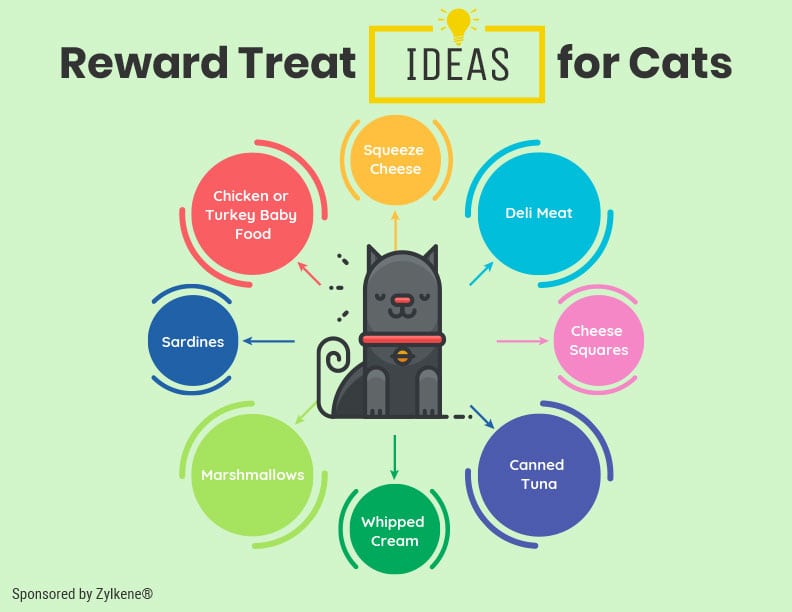Feline Toolkit
We are happy to provide you with the Feline Digital Toolkit, a resource that makes it easy to maintain timely, relevant communications with pet parents. The Vetoquinol team is dedicated to helping pets and improving the clinic experience for you and your clients. This digital toolkit is just one of the ways we use our passion for animal health to help you grow your business.
Below, we have provided information you can simply copy and paste into social media posts, on your website, and in emails and letters to your clients. Feel free to use the information as provided or personalize to your taste. The Feline Digital Toolkit includes the following:
- 10 social media posts (including associated images) for use on sites such as Facebook, Twitter and Instagram
- 2 articles written by our veterinarians for use on your website, blog or in newsletters
- 2 infographics
We hope you find this toolkit to be a valuable resource for your practice. Please feel free to contact your Vetoquinol USA Sales Representative with any questions.
Articles
Use the professionally-written articles below on your website, blog, or in your newsletter.
6 Tips to Enrich Your Cat’s Life
A Wild Life
Imagine the daily routine of a cat that lives in the wild. What do you imagine this cat is doing all day? A typical day in the wild is spent hunting for food, marking one’s territory, defending that territory, hiding from predators, grooming and resting. All of these activities take a lot of physical and mental energy – cats need rest to stay sharp.
A Life of Ease?
Compare the daily routine of a cat in the wild to that of a typical domesticated indoor cat and you will find significant differences. In an indoor environment, a cat may be fed 2 or 3 times per day, or have access to its food at all times, rather than having to hunt for 10-20 small meals per day in the wild. Cats may have access to one or several litter boxes in the home where their owner would like them to use the bathroom. There are typically no significant predators, except for the overzealous canine housemate, who is likely more of an annoyance than anything else. Competition for resources is minimal, especially if there are only one or two cats in the household. With all of these differences, we might think that the indoor cat has all of its basic needs fulfilled.
This cat has plenty of food and water, a roof over its head, areas to use the bathroom and rest. What about all of the mental and physical stimulation that cats require? This consistent engagement and stimulation is commonly missing from the indoor cat’s life and it can be a significant cause of a terrible condition: “Boring Life Syndrome”. While the name of this syndrome is made up, the concern is real. The lack of engagement in the daily lives of indoor cats can lead to any number of problems, such as over-grooming, chewing inappropriate items and over-eating.
Resources and Enrichment
To provide a truly enriching environment for our indoor cats, we must think about how to provide resources and activities that mimic what they would naturally do in the wild. If we can do this well, then we will have the best of both worlds; the safety and consistency of an indoor environment and the engagement and fulfillment of the outdoor environment.
Enrichment doesn’t have to be intimidating. Here are 6 simple tips you can implement today:
- Food:
- Offer multiple small meals per day, rather than 1 or 2 large meals.
- Hide these meals around the house or place small amounts of food in a puzzle feeder to encourage activity while fulfilling the primal urge to hunt.
- Playtime:
- It is important to incorporate small sessions of play into your feline friend’s day. Try something that they can chase, and then grab ahold of and sink their teeth into at the end of the activity. This will mimic hunting in the wild while burning calories and increasing mental engagement.
- Each cat is different, “play” around with what toys your cat enjoys the most and mix it up over time.
- Litter boxes:
- Provide enough litter boxes! A basic rule of thumb is “n + 1”. If you have 1 cat, you should have at least 2 litter boxes in your home. If you have 3 cats, you should have a minimum of 4 litter boxes in your home.
- Ideally, a litter box should be located on each level of your home for easy access. This becomes particularly important if you have a geriatric cat.
- Clean your litter boxes daily! We want our cats to use the same litter box each and every time in our home. Our best bet for consistent success is to provide enough litter boxes and keep those boxes as clean as possible.
- Scratching:
- Scratching is a normal cat behavior. It helps cats mark their territory, both visually and via pheromones that are left behind on the objects they scratch. Scratching is also a great way for cats to stretch their muscles by reaching well up onto a vertical surface such as a tree trunk to leave their mark.
- Offer multiple scratching posts in different areas of the house. One of the best locations may be near their favorite sleeping area, as they can reach up onto the post and have a good stretch after their nap
- Offer both vertical and horizontal oriented scratching posts. Pay attention to which type of orientation and which surface textures your cat prefers the most.
- Places to take a “cat nap”:
- When it is time to rest, cats like to have a place that is comfortable and safe. You may find that some of your cat’s favorite areas to nap are under the bed or on the back of the couch with some sunshine warming their body. You can create ideal resting places by providing a comfortable spot in a quiet, undisturbed area of your house.
- Room with a view:
- Elevated perches are ideal areas for your cat to catch a view of the world around him or her. For some cats, these elevated perches may also be one of their favorite spots to hunker down and catch a few Z’s.
To recap, there are two basic concepts to remember when providing an optimal environment for our feline friends.
- Provide all the basic resources that your cat needs to be healthy.
- Keep your cat actively engaged throughout their daily routine with enriching activities.
Cats enrich our lives – let’s enrich theirs!
Stress-Free Tips: Tackling Your First Vet Visit
Adding a new puppy, kitten or adopted pet to your family can be a fun and exciting time for your family. However, with it, comes a lot of new responsibilities and stressors. This is especially true for the new pet, who is having to adjust to a new environment, new people and new experiences. One experience that can be especially challenging for a new pet is going to the vet for the first time. Here are some simple tips that can help make the first vet visit a better experience for your new pet.
Tip #1: Start eliminating stressors before the veterinary visit
A big part of how your pet reacts to their vet visits involves many things that happen before they even get there. Things like: car rides, the carrier experience or simply leaving the house (especially for house cats) can all play into your pet’s frame of mind when they get to the vet.
If you have a cat or small dog, ensure they are comfortable in their crate/carrier well before the vet visit. (for tips on this, click here). For larger dogs, practice using the restraint or seatbelt in the car. Take short, frequent car rides for a week or so leading up to the ride to the veterinarian to acclimate them to driving. You might even drop by the clinic a time or two so they can meet the staff and sniff around to get comfortable. Check with your veterinarian to make an appointment for this “happy” visit.
Tip #2: Practice handling techniques at home
Vet staff will need to explore and touch many areas on your pet’s body during their first visit, and visit thereafter. Prior to the visit, spend some time practicing touching your pet in the “trigger point” areas – ears, paws, hind quarters, muzzle – this is especially important if your new pet is adopted as they might have had negative experiences in the past. Work with your pet to get him/her more comfortable with touch. Positive reinforcement, such as treat rewards, can help your pet associate touch / petting as a positive. If your pet is still reactive to touch, let your veterinarian know ahead of time so they can be mindful.
Tip #3: Treats! Treats! Treats!
Find some treats that your pet enjoys and use them to help provide motivation to get into the carrier or the car, reward them for letting you touch them calmly. For particularly stressful situations, like this veterinary visit, high value treats are recommended.
Examples of high value treats for dogs:
- Spray cheese
- Peanut butter
- Cheerios
- Deli Meats
- Softer treats of their favorite protein / flavor
Examples of high value treats for cats:
- Marshmallows (also great for pilling cats!)
- Canned tuna / tuna juice
- Tiny shrimp
- Deli Turkey
Consider asking your veterinarian if they use treats or food rewards as part of their treatment protocol; if not, you should bring your own. (Note: always check with your vet to ensure your pet can have food prior/during their appointment, as there are some tests and medications that require an empty stomach. Additionally, if your new pet is showing signs of stomach upset, this may not be interested in treats.)
Tip #4: Don’t forget leash training!
Your dog will need to be on a leash during their visit. As part of your preparation, work with your new dog or puppy on a leash as much as you can. A new pet has many “firsts” as part of their initial vet visit, so making them as comfortable as possible on a leash before they go can help make the trip much smoother. Simply using the leash around your house and yard can help acclimate your pup to their new leash. Remember, many veterinary clinics prefer (and in some cases require) the use of standard leashes versus retractable leashes due to animal safety concerns in the waiting room. So, make sure to practice with the type of leash you will be using at the clinic.
Hopefully these tips will help make the first vet visit a success for your pets!
If you are concerned that your pet will still have a “ruff” time at the vet’s office, try a calming supplement, such as Zylkene. Zylkene is safe for puppies, kittens and older dogs and cats and simply helps take the edge off of their anxiety. Always call your vet before administering any supplements.



Social Media Posts
Copy and paste the desired text to your clinic’s Facebook, Twitter or Instagram pages and follow any additional steps as instructed. Right-click the associated image and choose “Save Image As…” to save the image to your computer, then add the image to your post.